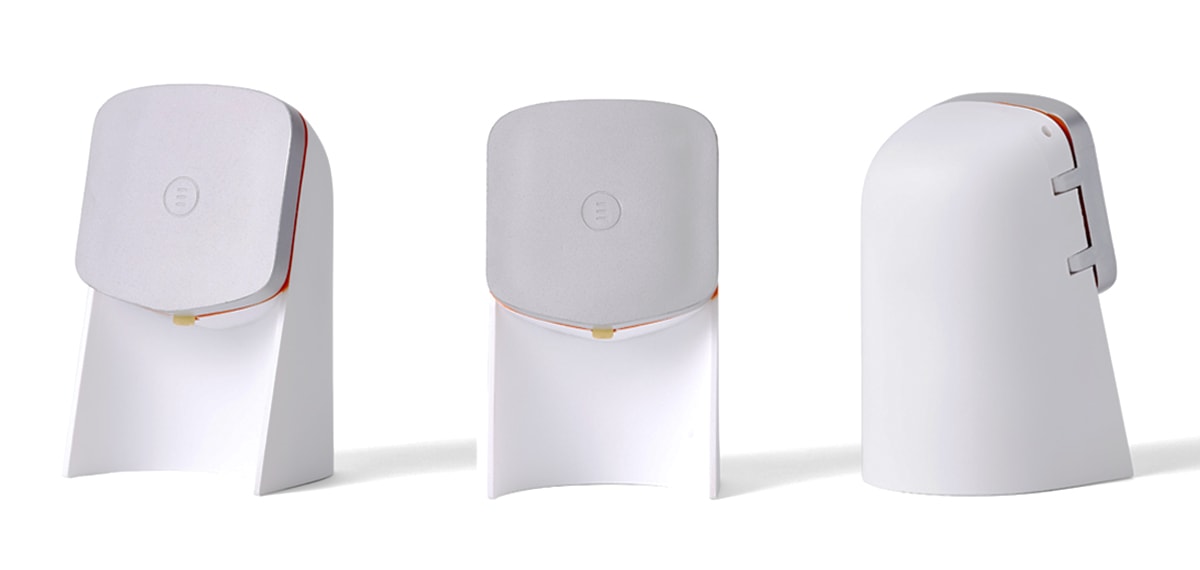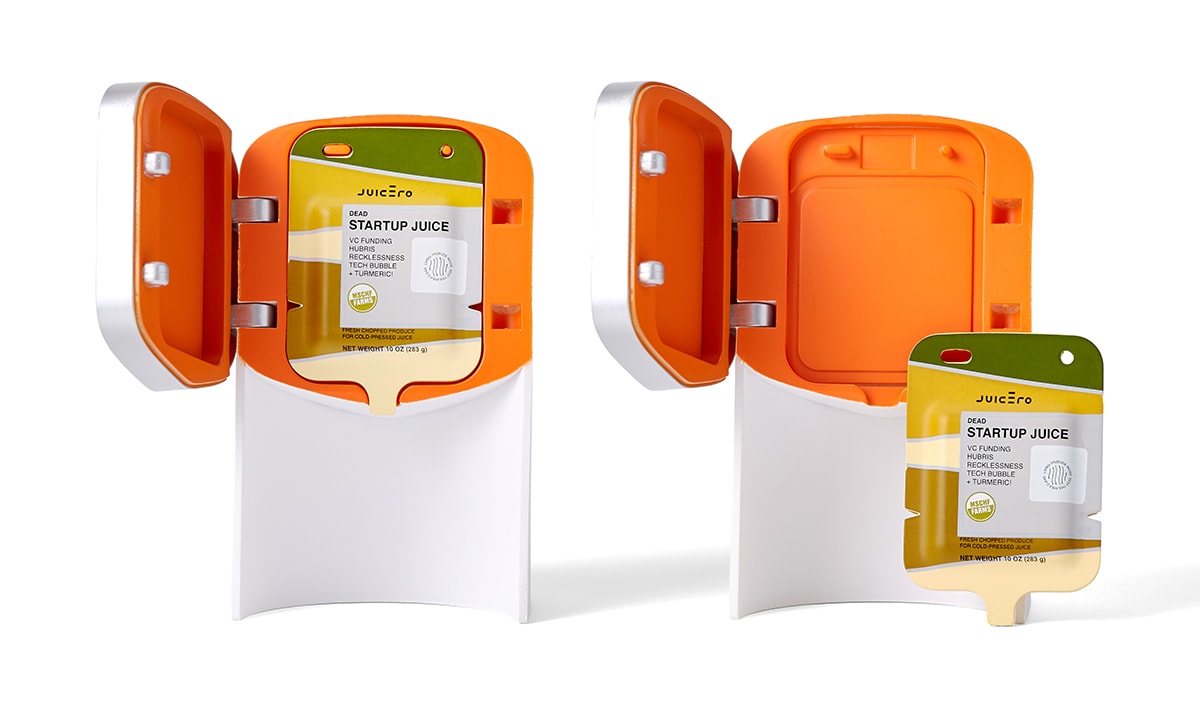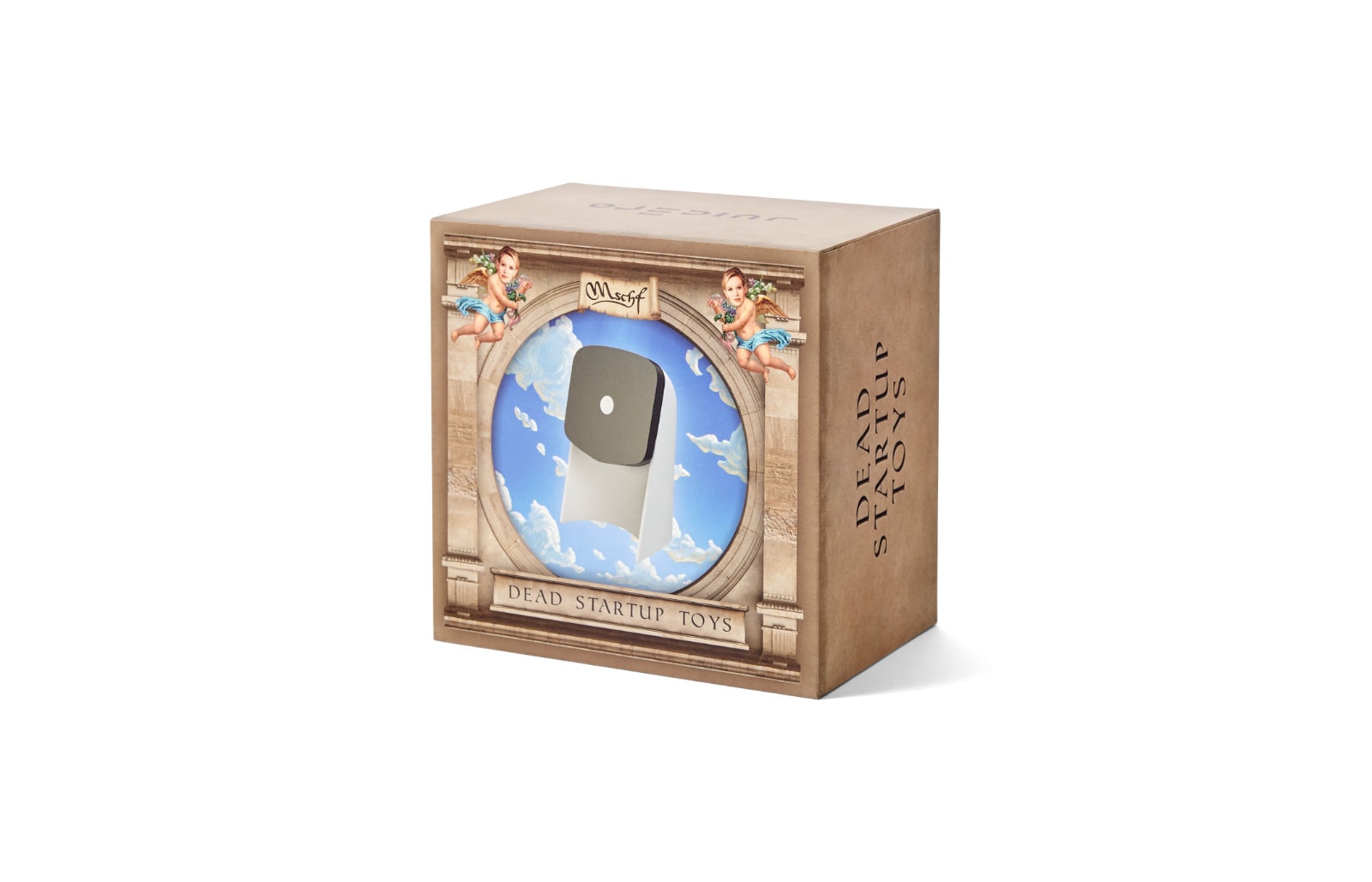
- Weight: 4oz
- Size: W2xD2xH3.5in
- Material: PVC
- Lifespan: 1 year
- Funding: $120M
- Units shipped: ~2000-3000*
- Retail Price: $700

The Story
Juicero was the ultimate at-home cold-pressed juice device: a $400 milled aluminum unibody stuffed with custom engineered motors, only compatible with proprietary vegetable packs, all in the pursuit of juice. It also, ultimately, worked slightly less well than squeezing a bag of vegetables with your bare hands. Juicero had a wifi connection. It had an accompanying app. It died a spectacular death, on video, before the gleeful eyes of the American consumer public.
Juicero launched in 2016 at a time when juice was trendier than it is now. It was a byproduct of the hardware-happy IoT craze, and its death was perhaps a contributing factor in Silicon Valley’s extremely practical pivot away (once again) from physical product. Founded by Doug Evans, Juicero raised $120 million and counted respected VC firms among its backers, including KPCB and Google Ventures.

Juicero was designed by noted industrial designer Yves Behar. A teardown of the Juicero machine revealed massive overengineering and production spend clearly approved without input from either a businessperson or production manager. The machine was full of specialized custom-tooled parts, all in service to a fundamentally flawed general operating concept that involved applying force by means of a flat plate with 0 mechanical advantage. This contributed to both its massive cost and remarkable non-utility.
Juicero attempted to build a walled garden ecosystem with the intent to keep its customers in thrall once onboarded. The machine accepted only Juicero-produced QR code-stamped fruit bags (unlike, say, any garden-variety juicer), and the packs had strictly timed lives, so that a full (and, we should note, hermetically sealed) bag could be rejected by the machine on “freshness” grounds after a short duration.

Ultimately Juicero was slain by a valiant Bloomberg video review, in which it was shown that two human hands were at least as effective in getting juice out of the Juicero juice bags. Beyond making a mockery of the product’s hardware, this hand-squeezeability suggested that the vegetables in the bags were mostly juiced to begin with, and the entire juicing process therefore superfluous.
Juicero, hardware-obsessed aspirational jailer, lies dead at our feet. Let us celebrate its passing.


